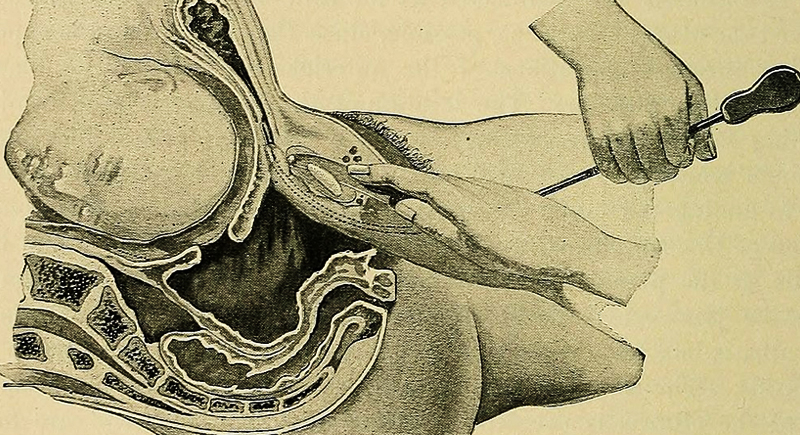The Shocking (And Disturbing) Reason Chainsaws Were Originally Invented.
Most people assume chainsaws were invented to make cutting wood more efficient. In reality, their origin is far more unsettling. Long before they became tools of forestry—or props in horror films—chainsaws were instruments used in medical procedures during childbirth.
In earlier centuries, giving birth was one of the most perilous experiences a woman could endure. Without anesthesia, sterile equipment, or reliable surgical methods, physicians often resorted to improvised tools and techniques in desperate attempts to save both mother and child.
The Procedure That Sparked It All

Image via Wikimedia Commons/Cameron, James C. (James Chalmers)
Before C-sections were considered survivable, doctors needed a way to help mothers deliver babies stuck during labor. When labor became complicated and a baby couldn’t fit through the birth canal, they reached for an invention that had sharp teeth. Their solution was called a symphysiotomy, a procedure that required slicing through part of the pelvis to make more space for the baby. It sounds horrific because it was.
And it was actually worse before. At first, surgeons used knives and hand saws to perform the operation. The process was slow, agonizing, and extremely risky. So, in 1780, two Scottish doctors, John Aitken and James Jeffray, decided to rethink the approach. They built a device with a chain of small teeth that could cut through bone and cartilage faster. That invention became the first version of the chainsaw.
The earliest chainsaw wasn’t built for logging. It was a small, hand-cranked tool meant to help doctors cut through bone during childbirth. Instead of roaring, it gave off a steady, mechanical buzz powered by a surgeon’s own strength. The idea was to work quickly when complications threatened a mother’s life, but the reality was grim. With no anesthesia available for another sixty years, women stayed awake through every turn of the blade.
By the 1830s, German surgeon Bernhard Heine advanced the design with his osteotome, a mechanical chainsaw meant for orthopedic surgery. It worked so well that it could replace hammers and chisels for amputations and bone cutting, although adoption was limited because of cost and skill. It functioned eerily similar to the modern chainsaw, which proves that it was at least good engineering.
How Medicine Passed The Torch
As medical science advanced, surgeries like the symphysiotomy faded away. Sterilization, anesthesia, and safer delivery methods made the need for such tools obsolete. But the design concept lived on. In 1905, inventor Samuel J. Bens saw potential in the chain mechanism for cutting redwood trees instead of bone. By 1926, German engineer Andreas Stihl created the first electric chainsaw, setting off a new era for forestry and construction.
Just when the world thought the chainsaw had found its peaceful purpose, Hollywood gave it a second, blood-soaked life. The Texas Chainsaw Massacre turned a once-medical device into an icon of terror in 1974. Ironically, the movie’s horror wasn’t far off from the real thing, because the chainsaw’s first victims weren’t trees. Sometimes, history’s scariest inventions start with good intentions.